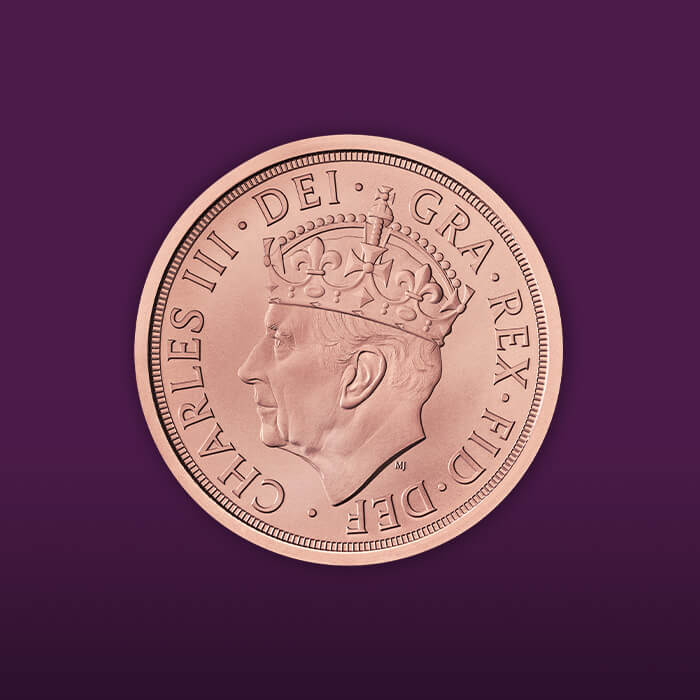Renowned for its beauty, quality and accuracy, The Sovereign has become known as the ‘chief coin of the world’ and its reputation makes it the cornerstone of any collection. This beloved coin has an impressive history dating back to the reign of Henry VII, who commissioned a ‘new money of gold’ to establish the legitimacy and authority of the new Tudor dynasty. Initially, The Sovereign had a value of 20 shillings and remained in production until the reign of James I, who replaced it with another gold coin.
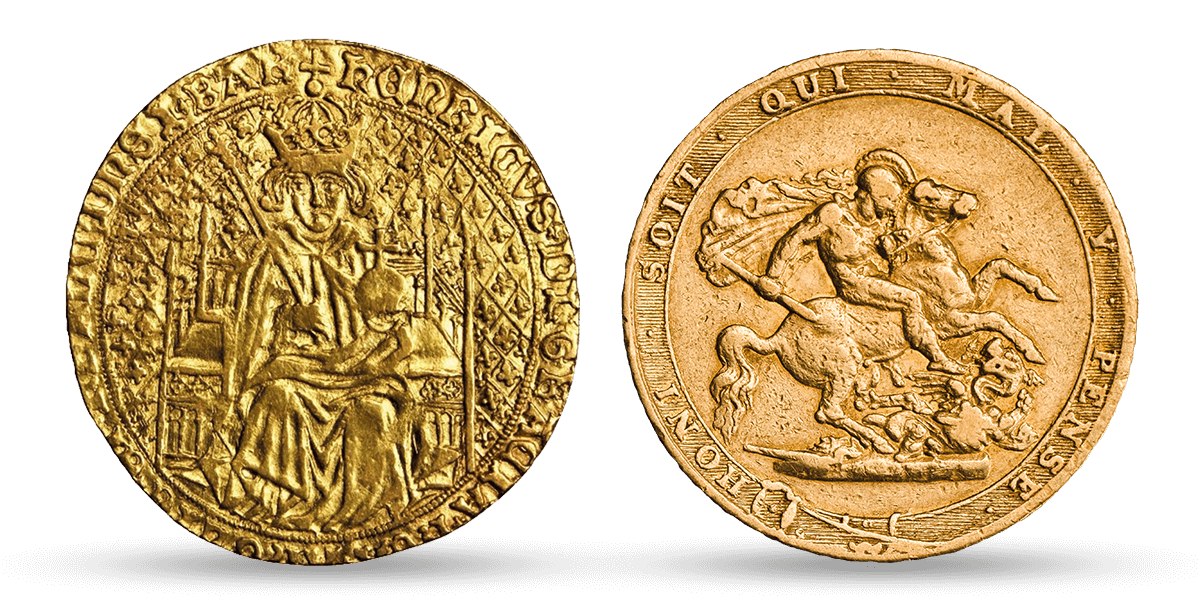
After a break of more than 200 years, The Sovereign was revived in 1817 during the reign of George III. This new Sovereign featured perhaps one of the most loved designs to grace the coin, Benedetto Pistrucci’s St George and the dragon. The Italian engraver had secured a commission from the Master of the Mint, William Wellesley Pole, to design the reverse for this new Sovereign. There is some debate over where the inspiration for the St George and the dragon design came from. Pistrucci claimed to be the one who suggested this to Wellesley Pole, after the engraver secured a commission from Lady Spencer to create a cameo of the saint in the Greek style. However, evidence shows that Pistrucci wasn’t always a reliable witness and there is a long tradition of saints being shown in combat since the introduction of the gold angel some centuries before.
Pistrucci’s beautiful design also featured on the 1818 crown, which Wellesley Pole saw as his crowning glory for the new coinage. These coins received multiple blows on the great Boulton presses with a rate of three coins produced every minute. After these were struck, Pistrucci inspected each coin to ensure they met his high standards. The 1818 crown was described as ‘the handsomest coin in Europe’ by a shrewd contemporary judge, and Wellesley Pole himself described them as ‘unique and inimitable’.
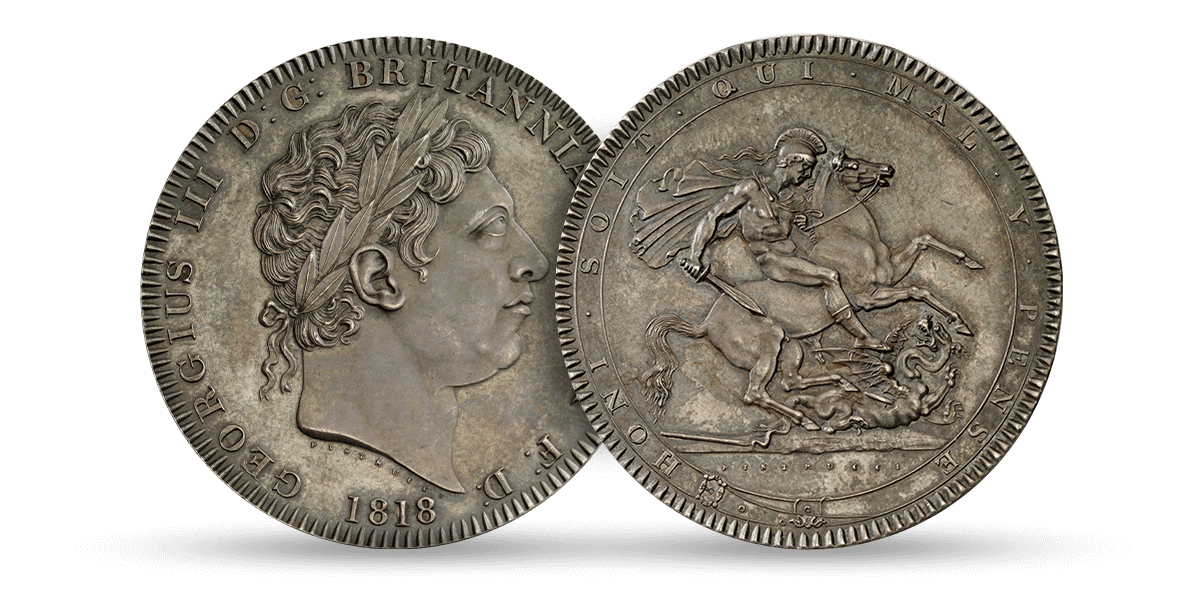
Since it was first introduced to The Sovereign, Pistrucci’s design has undergone a few changes. The 1817 Sovereign featured St George sat astride his horse with a broken spear in hand. The coin also featured a plumed helmet and an old French inscription ‘HONI· SOIT· QUI· MAL· Y· PENSE’, translated as ‘Evil unto him that thinks evil of it’. The plume and inscription were later removed on The Sovereign from 1821, and the date was added below the design. In this remodelled design, the broken spear was also replaced with a sword.
Despite its beauty, the St George and the dragon design was replaced with a heraldic design of the Royal Arms in 1825. It wasn’t until the reign of Queen Victoria that Pistrucci’s St George and the dragon design would return to The Sovereign in 1871. It has since appeared on Sovereigns struck for every monarch. The 2024 Sovereign is the first Proof Sovereign to feature both Pistrucci’s classic design and the first definitive coinage portrait of His Majesty King Charles III.
After its restoration, the St George and the dragon design has occasionally been replaced with alternative designs for special occasions, such as the jubilees of Queen Elizabeth II. However, Pistrucci’s remarkable design has become synonymous with The Sovereign and its reputation of numismatic excellence.
RELATED ARTICLES
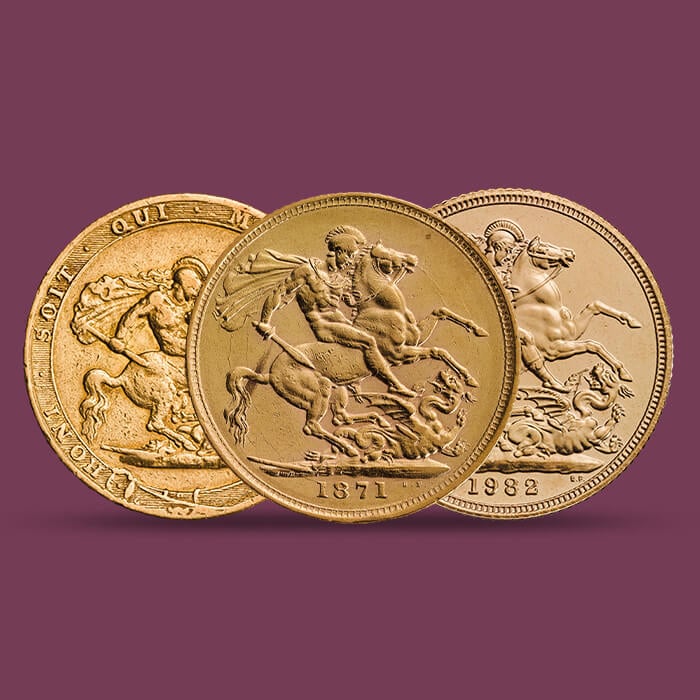
SIGNIFICANT MOMENTS FOR THE SOVEREIGN
Discover an impressive history
A SOVEREIGN FIT FOR A KING
An iconic designYou may be interested

1887 Victoria £5 Sovereign
Very Fine Condition
Price: £3,495.00
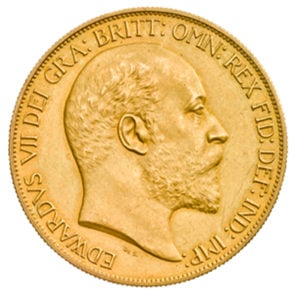
1902 Edward VII Matte Proof £5 Sovereign
Very Fine Condition
Price: £4,290.00
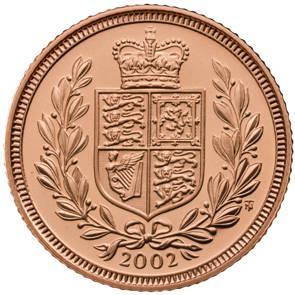
2002 Elizabeth II Proof Half-Sovereign
Proof Condition
Price: £475.00
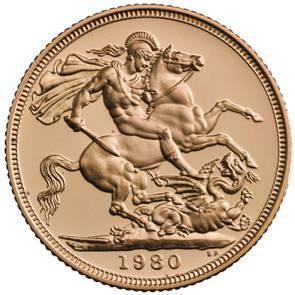
The 1980 Gold Proof Sovereign
Proof Condition
Price: £685.00
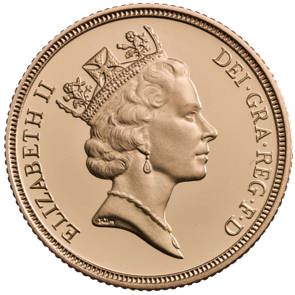
The Sovereign 1988
Proof
Price: £825.00
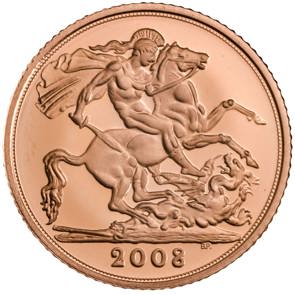
The Half-Sovereign 2008
Proof
Price: £400.00
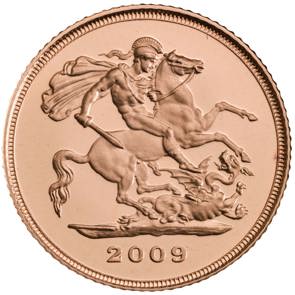
The Half-Sovereign 2009
Proof
Price: £400.00
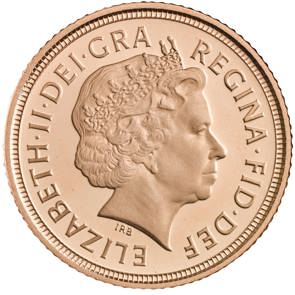
The Half-Sovereign 2011
Proof
Price: £425.00

